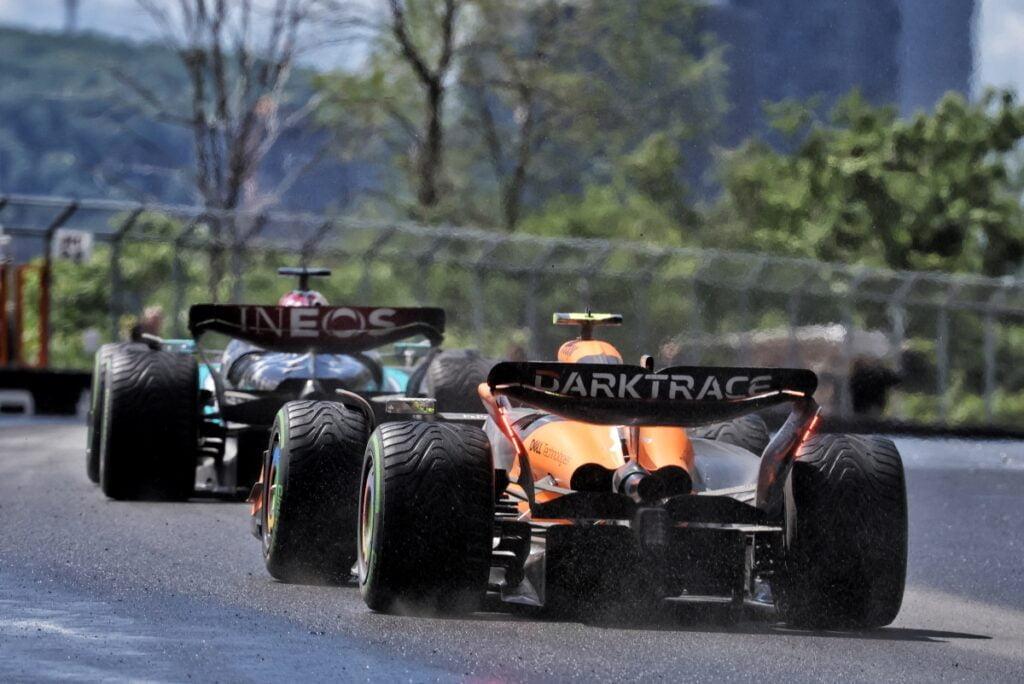The Untold Story Behind McLaren's Speed Surge in Canada's Mixed Conditions

McLaren boss Andrea Stella has unveiled the fascinating strategies that allowed the team to showcase rapid pace during the mixed conditions of the Formula 1 Canadian Grand Prix. In an impressive display, Lando Norris surged past George Russell and Max Verstappen, establishing a commanding lead. The secret? A combination of strategic tire management and favorable race positions.
As the race unfolded, Norris initially fell behind Russell and Verstappen by about eight seconds. However, a well-executed and sudden burst of speed saw him not only catch up but also overtake both rivals in successive laps. Meanwhile, as Oscar Piastri was reeling in Russell and Verstappen, Norris sped ahead to command a seven-second lead. Stella attributed this performance to McLaren's ability to preserve their Intermediate tires better than the other teams, thanks to the lack of pressure from behind.
The Role of Weather and Tire Management
Stella emphasized that the team’s strategy wasn’t merely a tactical call to outdo competitors but rather a measured response to an impending weather change. “We knew it would be tough for the Intermediate tires to last until the forecasted rain around lap 30,” he explained. The absence of immediate pressure allowed McLaren to conserve their tires, even when it seemed premature.
This tire management tactic involved seeking out colder or wetter patches on the track to maintain the tires in optimum condition. “There’s no magic,” Stella pointed out. “We were simply in a position to implement this strategy without losing ground, as we didn’t face any threats from behind during the early laps.”

Unexpected Turns and Safety Car Intervention
The race dynamics changed dramatically when a Safety Car was triggered by Logan Sargeant’s stranded Williams. Norris, who wasn’t instructed to pit immediately, subsequently lost his lead. The cars behind capitalized by switching to a fresh set of Intermediates, while Norris rejoined the race in third place after his pit stop.
Although Norris lamented the lost opportunity for a probable win, Stella reasoned that Mercedes’ superior pace in the drying conditions would have made it challenging to maintain the lead. “Later in the race, it was evident that Mercedes would finish ahead of Lando,” Stella conceded. “We maximized our position post-Safety Car. Without the Safety Car, Norris could have built a sufficient buffer to maintain the lead on dry tires.”
Mercedes' Competitive Edge
Even with the Safety Car, Stella acknowledged that Mercedes had the raw speed to catch up. “They were consistently a few tenths faster than us,” he noted. To fend off Mercedes, McLaren would have needed a substantial lead, which became academic as the race unpredictable conditions unfolded with multiple safety cars and weather changes.
Concluding his reflections on the race, Stella remarked, “We expected a race defined by various scenarios due to potential safety cars and weather. Ultimately, we’re satisfied with the outcome.” Despite the challenges, McLaren showcased strategic brilliance and adaptability, elements that will hold them in good stead for future races.